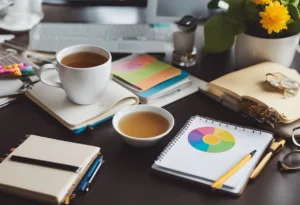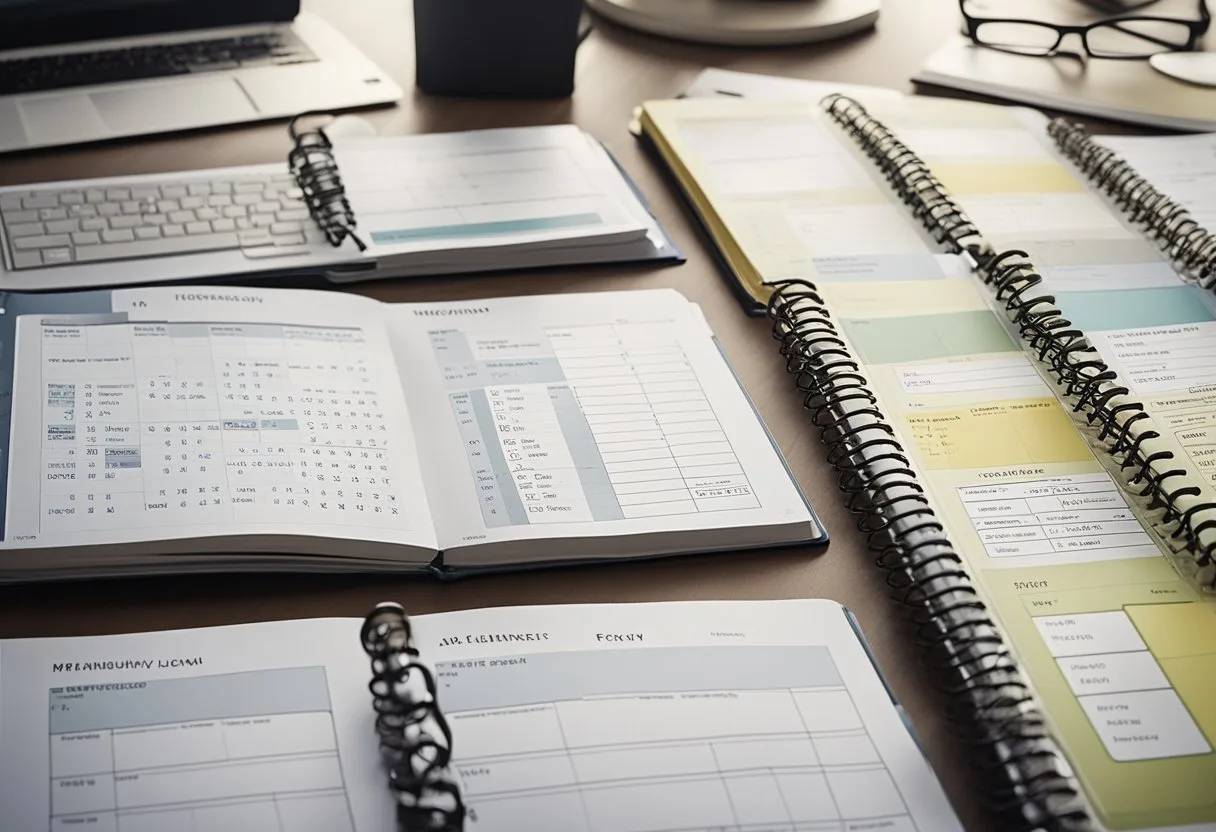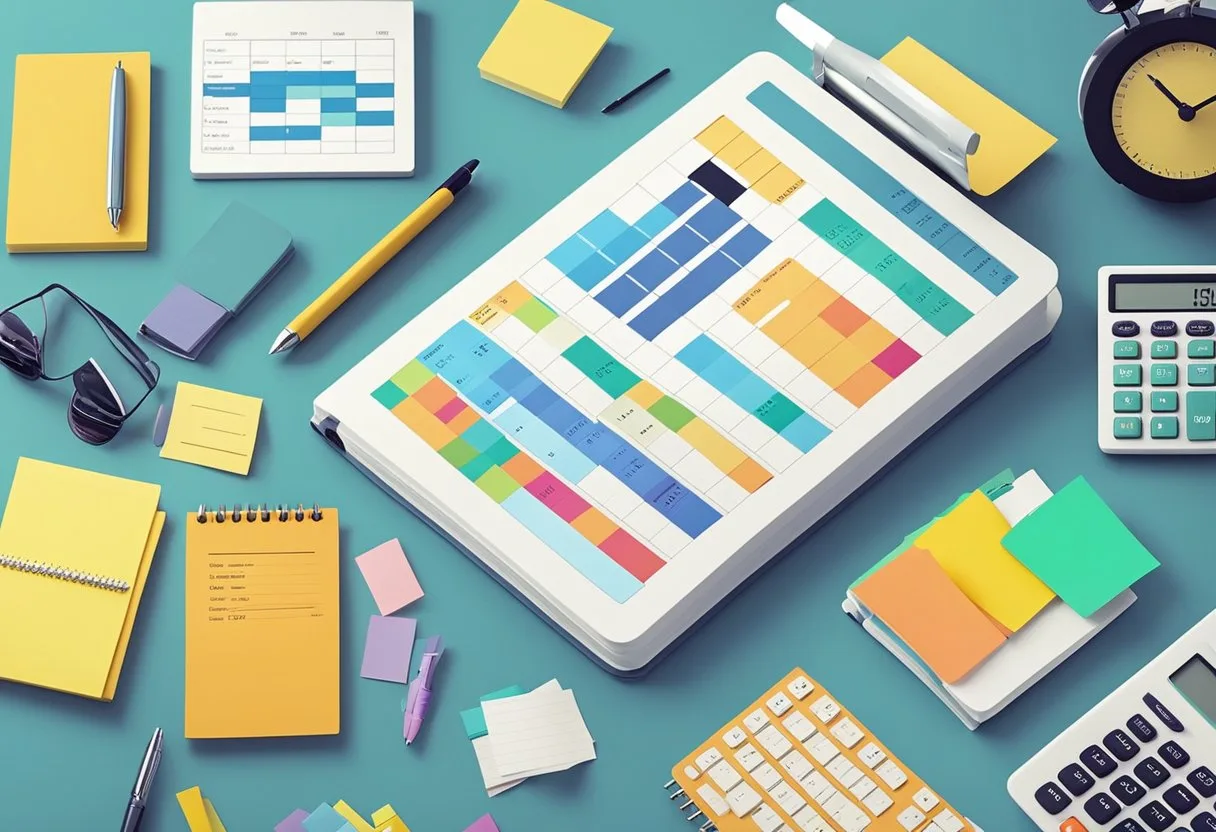Gratitude journaling has been a popular practice for years and has been shown to have a positive impact on mental health and wellbeing. A gratitude planner is a relatively new addition to the market, offering a structured way to incorporate gratitude journaling into daily life. These planners combine the benefits of traditional planners with prompts for daily gratitude reflection, helping users to cultivate a more positive mindset and outlook on life. In this blog post, I will share with you how to use a gratitude planner and provide you tips on what to write in your gratitude planners.
The Happiness Planner® is one example of a popular gratitude planner. It integrates gratitude journaling and cognitive-behavioral therapy techniques into an everyday planner, elevating it from a mere productivity tool to an essential companion for personal wellness. By reflecting on daily gratitude and setting intentions for the day ahead, users can improve their overall happiness and wellbeing.
Gratitude planners come in a variety of formats, including digital downloads and printable templates. They often include prompts for daily gratitude reflection, as well as space for goal-setting and habit-tracking.
Understanding Gratitude
Gratitude is an emotion that involves acknowledging and appreciating the good things in life, no matter how small. It is a positive attitude towards life that can have profound effects on a person’s mental and physical well-being. In this section, we will explore the science of gratitude and the benefits it can bring to one’s life.
The Science of Gratitude
Research has shown that practicing gratitude can lead to a multitude of benefits. Gratitude is associated with increased life satisfaction, positive emotions, and resilience. It can also improve one’s self-worth and satisfaction with life.
The limbic system, the part of the brain responsible for emotional experiences, is activated when experiencing gratitude. The release of dopamine and serotonin, neurotransmitters associated with pleasure and well-being, occurs when one experiences gratitude. This can lead to a positive feedback loop, where experiencing gratitude leads to increased well-being, which in turn leads to more gratitude.
Benefits of Gratitude
Practicing gratitude can have a profound impact on one’s mental and physical health. It can reduce symptoms of depression and anxiety, increase resilience, and improve sleep quality. Gratitude can also enhance relationships by increasing feelings of social connection and empathy.
In addition to the mental health benefits, gratitude can also have physical health benefits. It can lower blood pressure, reduce inflammation, and improve heart health.
Incorporating gratitude into one’s daily life can have a significant impact on overall well-being. By practicing gratitude regularly, one can cultivate a more positive attitude towards life and improve their mental and physical health.
How to Use a Gratitude Planner
- Choose Your Planner: Select a gratitude planner that resonates with you, whether it’s a dedicated gratitude journal or a section in your regular planner.
- Make It a Habit: Set aside a few minutes each day, ideally at the same time, to reflect and write.
- Start with Today: Begin each entry with today’s date for reference.
- Reflect on Your Day: Think about your day and identify moments or things for which you are grateful.
- Write It Down: Jot down at least three things you’re grateful for each day. These can be simple, like a sunny day, or more profound, like a loved one’s support.
- Be Specific: Instead of writing general statements, be specific about what you’re grateful for and why.
- Feel the Gratitude: Try to genuinely feel thankful as you write. This can deepen the emotional benefit.
- Mix It Up: Vary your entries from day to day to keep the practice fresh and cover different aspects of your life.
- Use Prompts: If you’re stuck, use a prompt to get your thoughts flowing.
- Reflect on Challenges: Occasionally, reflect on how challenges have brought growth or gratitude, turning negatives into positives.
- Review Regularly: Look back on past entries every so often to remind yourself of the good things over time.
- Keep It Private: Remember, your gratitude planner is a personal document. You don’t have to share it with anyone unless you choose to.
- Be Consistent: Consistency is key. Even on tough days, try to find something to be grateful for.
- Decorate and Personalize: Make your planner your own with decorations, stickers, or doodles that make you happy.
- Expand Your Practice: As you become more comfortable, consider expanding your practice by writing more detailed entries or including gratitude towards yourself.
15 Gratitude Planner Ideas
- Writing down one thing you’re grateful for each morning.
- Listing a person who made a positive impact on your day.
- Noting a skill or personal quality you’re thankful for having.
- Acknowledging a challenge you overcame.
- Appreciating a simple pleasure or comfort.
- Reflecting on a happy memory that occurred.
- Expressing gratitude for a lesson learned, even if it came from a difficult experience.
- Celebrating a small win or success of the day.
- Showing thankfulness for your health, body, or senses.
- Recognizing an act of kindness, whether received or given.
- Being grateful for nature or the environment around you.
- Appreciating your home or personal space.
- Noting down a favorite item you used today.
- Acknowledging the productivity or progress made on a goal.
- Writing about a cultural experience, book, music, or art piece you enjoyed.
Creating Your Gratitude Planner
Creating a gratitude planner is a great way to cultivate a positive mindset and focus on the things that matter most to you. Here are some tips to get started:
Choosing a Format
When it comes to choosing a format for your gratitude planner, there are several options to consider. You can create a physical planner using a notebook or binder, or you can opt for a digital planner. Printable PDF templates are also a great option for those who prefer a pre-designed layout.
Design and Templates
Design and templates are important when creating your gratitude planner. Look for templates that include prompts and exercises to help you cultivate gratitude. You can also create your own template using your favorite design software or by using a bullet journal format.
Setting Up Your Planner
Once you have chosen your format and design, it’s time to set up your planner. Start by creating a gratitude list template that you can use daily. This can be as simple as a blank page where you write down the things you are grateful for each day. You can also add prompts to help guide your thinking.
In addition to your gratitude list, consider adding a calendar or goal-setting pages to your planner. This can help you stay organized and focused on your goals while also cultivating a positive mindset.
Creating a gratitude planner is a simple and effective way to focus on the things that matter most to you. By choosing the right format, design, and templates, you can create a planner that works for your unique needs and helps you cultivate gratitude in your daily life.
Journaling Techniques and Tips

Effective Journaling Practices
Journaling is an effective way to reflect on one’s life and cultivate gratitude. To get the most out of a gratitude planner, it is essential to commit to a routine and make it a daily habit. Writing down thoughts and feelings can help to process emotions and gain clarity.
It is important to write honestly and openly, without fear of judgment. One technique is to write in a stream-of-consciousness style, allowing thoughts to flow freely without worrying about grammar or spelling.
Gratitude Prompts and Examples
Gratitude prompts can help to jumpstart journaling and provide inspiration. Some examples of prompts include writing about a person who has had a positive impact on one’s life, reflecting on a recent accomplishment, or listing three things that brought joy that day. Writing about small moments of gratitude, such as a delicious meal or a kind gesture from a stranger, can help to cultivate a positive mindset and shift focus away from negative thoughts.
Maintaining a Routine
To maintain a routine, it is important to find a time and place where journaling can be done consistently. Some people prefer to journal first thing in the morning, while others prefer to do it before bed. It is important to find a routine that works for one’s schedule and lifestyle. Making a commitment to journaling can help to establish it as a daily habit and make it easier to stick to over time.
Journaling can be a powerful tool for cultivating gratitude and improving mental health. By committing to a routine, using gratitude prompts, and writing honestly and openly, it is possible to gain clarity and perspective on one’s life and cultivate a more positive mindset.
Incorporating Gratitude into Daily Life

Gratitude is an essential aspect of life that can bring about positivity and happiness. Incorporating gratitude into daily life can be achieved through various means, such as keeping a gratitude journal, practicing mindfulness, and expressing gratitude to others. In this section, we will explore how to incorporate gratitude into daily life, focusing on gratitude in relationships, gratitude at home, and gratitude at work.
Gratitude in Relationships
In relationships, expressing gratitude can go a long way in strengthening the bond between individuals. A simple “thank you” or a note of appreciation can make a significant difference. It is essential to recognize the efforts of loved ones and express gratitude for their presence and support.
Gratitude at Home and Work
Gratitude can also be incorporated into daily life at home and work. At home, individuals can express gratitude for their blessings, such as family, friends, and a roof over their heads. It is also essential to appreciate the little things in life, such as a warm cup of tea or a good book.
At work, expressing gratitude can boost morale and create a positive work environment. It can be as simple as thanking a colleague for their help or recognizing their hard work in a meeting. Practicing gratitude at work can also improve job satisfaction and overall well-being.
Incorporating gratitude into daily life can bring about positivity and happiness. By expressing gratitude in relationships, at home, and at work, individuals can strengthen their bonds, appreciate their blessings, and create a positive environment.
Expanding Your Practice
Once you have established a regular gratitude practice, you may want to expand your practice and explore new ways to cultivate gratitude. Here are some ideas to help you take your practice to the next level.
Gratitude Challenges and Activities
One way to expand your gratitude practice is to participate in gratitude challenges and activities. These challenges often involve setting a goal to express gratitude in a specific way for a set period of time, such as writing a thank-you note every day for a week. By committing to these challenges, you can challenge yourself to find new and creative ways to express gratitude.
Another way to expand your gratitude practice is to participate in gratitude activities. These activities can include things like creating a gratitude jar, where you write down things you are grateful for on slips of paper and store them in a jar, or creating a gratitude collage, where you cut out pictures and words that represent things you are grateful for and paste them onto a poster board.
Tracking Progress and Goals
Tracking your progress and goals can be an effective way to stay motivated and focused on your gratitude practice. One way to do this is to keep a gratitude log or journal. In this log, you can write down things you are grateful for each day, as well as any challenges or obstacles you faced in your gratitude practice.
You can also set goals for your gratitude practice, such as expressing gratitude to a certain number of people each week, or setting a goal to find something to be grateful for in every situation. By setting these goals and tracking your progress, you can stay motivated and focused on your gratitude practice.
Expanding your gratitude practice can help you to continue to cultivate gratitude and experience the many benefits that come with it. By participating in gratitude challenges and activities, and tracking your progress and goals, you can take your practice to the next level and continue to experience the many benefits of gratitude.
Frequently Asked Questions
What are the essential features to look for in a planner that includes gratitude prompts?
When looking for a planner that includes gratitude prompts, it is essential to consider the prompts’ frequency and relevance. The planner should have daily prompts that are specific to gratitude, and the prompts should be easy to understand and answer. The planner should have enough space for the user to write down their thoughts and feelings.
How can one incorporate a daily gratitude practice into their planning routine?
Incorporating a daily gratitude practice into a planning routine can be done by setting aside a specific time each day to reflect on what they are grateful for. This can be done in the morning, afternoon, or evening, depending on what works best for the individual. It is also crucial to make it a habit and be consistent with the practice.
What are some benefits of using a gratitude planner or journal?
Using a gratitude planner or journal can have many benefits, such as reducing stress and anxiety, increasing happiness and well-being, improving relationships, and enhancing overall life satisfaction. It can also help individuals focus on the positive aspects of their lives and appreciate the good things they have.
Can you recommend any planners that specifically focus on wellness and gratitude?
There are various planners available in the market that focus on wellness and gratitude. Some popular options include the Passion Planner, the Panda Planner, and the Dailygreatness Journal. These planners have specific sections for gratitude and wellness, making it easier for individuals to incorporate these practices into their daily routine.
How do you create a personalized gratitude planner template?
Creating a personalized gratitude planner template can be done by using a blank planner or journal and adding gratitude prompts and sections. It is essential to consider the individual’s needs and preferences and create prompts that are relevant and meaningful to them. It is crucial to make the planner visually appealing and easy to use.
What steps should one take to begin a gratitude journal?
To begin a gratitude journal, one should start by selecting a journal or notebook that they like and feel comfortable using. Next, they should set aside a specific time each day to reflect on what they are grateful for and write it down. It is also essential to be consistent with the practice and make it a habit.




